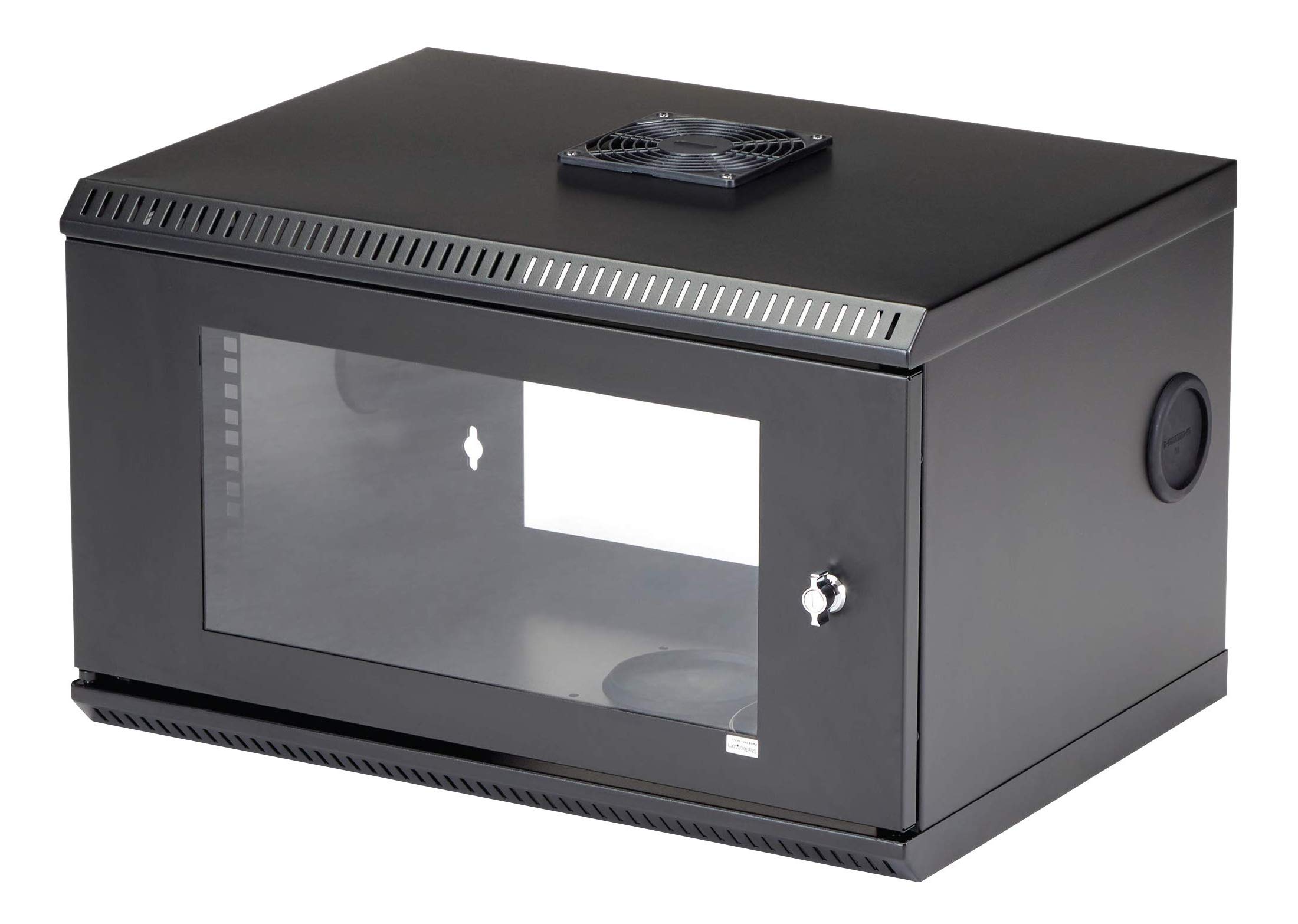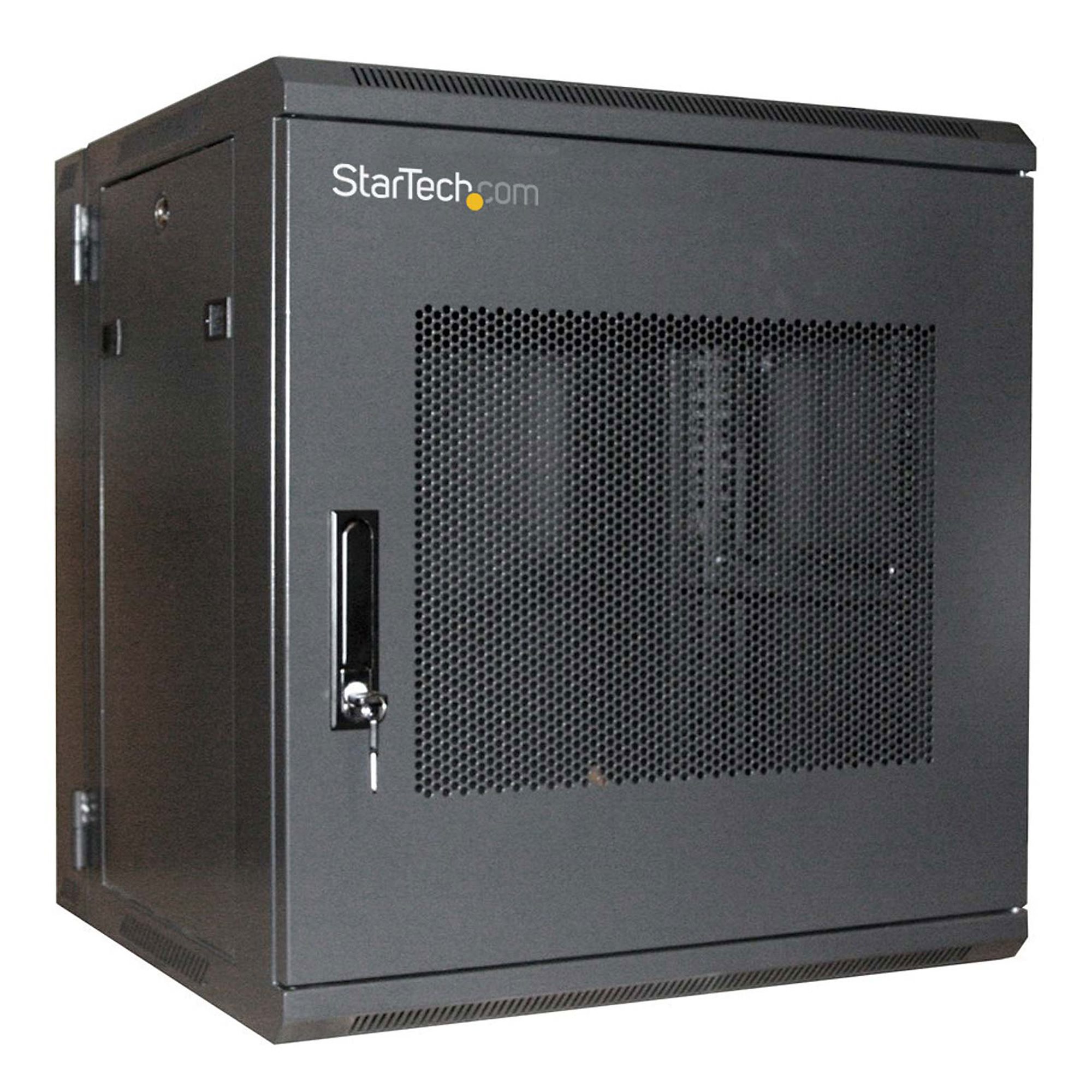Rack Mount Wall Cabinet Basics

Rack mount wall cabinets are essential for organizing and protecting network equipment, servers, and other IT devices. They provide a structured and secure environment for your equipment, ensuring efficient airflow, cable management, and physical security.
Types of Rack Mount Wall Cabinets
Different types of rack mount wall cabinets are available to cater to various needs and budgets. The most common types include:
- Single-door cabinets: These cabinets offer basic protection and access to equipment through a single door.
- Double-door cabinets: They provide wider access to equipment and are suitable for larger installations.
- Wall-mounted server cabinets: These cabinets are specifically designed to house servers and other high-performance devices.
- Network cabinets: These cabinets are optimized for network equipment, such as routers, switches, and patch panels.
Key Features and Specifications
When selecting a rack mount wall cabinet, several key features and specifications should be considered:
- Rack space: The number of rack units (RU) the cabinet can accommodate. This determines the amount of equipment you can install.
- Depth: The depth of the cabinet should be sufficient to accommodate your equipment and allow for proper airflow.
- Weight capacity: The maximum weight the cabinet can safely support. This is crucial for heavy equipment.
- Material: Steel cabinets offer superior durability and security compared to plastic cabinets.
- Door style: Single or double doors, glass or solid, and hinged or sliding doors are common options.
- Ventilation: Adequate ventilation is essential for preventing overheating of equipment. Look for cabinets with fans, vents, or perforated panels.
- Cable management: Features like cable trays, grommets, and brush strips help organize and manage cables.
- Security: Consider features like locking doors, tamper-proof hinges, and optional security systems.
Installation and Configuration, Rack mount wall cabinet
Installing and configuring a rack mount wall cabinet involves several steps:
- Choose a suitable location: Select a location that is well-ventilated, away from direct sunlight and moisture, and with adequate electrical access.
- Prepare the wall: Ensure the wall is strong enough to support the weight of the cabinet. You may need to install wall anchors or studs.
- Mount the cabinet: Use appropriate mounting hardware and tools to securely attach the cabinet to the wall.
- Install the equipment: Slide your equipment into the rack, ensuring proper alignment and securing it with rack screws.
- Connect the cables: Organize and connect cables to your equipment, using cable management features provided by the cabinet.
- Test and configure: Power on your equipment and test its functionality. Configure any necessary settings for your network or server.
Choosing the Right Rack Mount Wall Cabinet

Selecting the perfect rack mount wall cabinet for your needs is crucial, ensuring your equipment is safely housed and efficiently managed. This involves considering various factors like the size, capacity, and features of the cabinet.
Rack Mount Wall Cabinet Sizes and Capacities
The size of a rack mount wall cabinet is determined by the number of rack units (RU) it can accommodate. A rack unit is a standard measurement of 1.75 inches in height. Cabinets come in various sizes, typically ranging from 6RU to 42RU.
- Small cabinets (6-12RU): Ideal for small-scale deployments, housing a few devices like routers, switches, or small servers.
- Medium cabinets (12-24RU): Suitable for mid-sized deployments, accommodating a range of equipment, including network devices, security appliances, and small servers.
- Large cabinets (24-42RU): Designed for larger deployments, accommodating multiple servers, network equipment, and other critical infrastructure.
Factors to Consider When Choosing a Rack Mount Wall Cabinet
Several factors influence the choice of a rack mount wall cabinet.
- Equipment Type: The size and weight of your equipment will determine the required cabinet capacity and load-bearing strength.
- Space Limitations: The available wall space will dictate the maximum size of the cabinet you can install.
- Environmental Conditions: Consider the temperature, humidity, and dust levels in the environment where the cabinet will be installed. Look for cabinets with features like ventilation and dust filters to ensure optimal performance.
- Security: If you need to secure your equipment, choose a cabinet with features like locking doors, keypads, or access control systems.
- Budget: The cost of rack mount wall cabinets varies depending on their size, features, and brand. Set a budget and choose a cabinet that offers the best value for your needs.
Ventilation and Cooling
Adequate ventilation and cooling are crucial for rack mount wall cabinets, as they house electronic equipment that generates heat.
- Ventilation: Ensure the cabinet has sufficient ventilation to allow for airflow and prevent overheating. Look for cabinets with perforated doors, side panels, or rear ventilation slots.
- Cooling: Consider adding fans or other cooling systems to the cabinet, especially for high-density deployments. Fans can be installed in the cabinet or mounted externally.
Rack Mount Wall Cabinet Brands and Models
| Brand | Model | Key Features |
|---|---|---|
| APC | NetShelter SX | Secure, customizable, and scalable with a variety of options for ventilation, cooling, and power distribution. |
| StarTech.com | RK619WALLB | Affordable, compact, and ideal for small-scale deployments. |
| Tripp Lite | SRWALL24U | Offers a variety of sizes and features, including locking doors, adjustable shelves, and cable management options. |
| Middle Atlantic Products | RACK-MOUNT-WALL-CABINET | High-quality, customizable, and designed for demanding applications. |
Rack Mount Wall Cabinet Accessories and Components

Rack mount wall cabinets are designed to house and organize various IT equipment, but they are not complete without the right accessories and components. These accessories enhance functionality, improve cable management, and enhance security, ensuring optimal performance and longevity of your equipment.
Shelves
Shelves are essential for maximizing space within a rack mount wall cabinet. They provide additional horizontal surfaces for mounting equipment, allowing you to accommodate more devices in a limited space. Shelves are typically made from metal or glass, and they come in various sizes and configurations to suit different needs.
- Fixed Shelves: These are permanently attached to the cabinet frame and offer a stable platform for equipment. They are ideal for heavier equipment or for applications where frequent adjustments are not required.
- Adjustable Shelves: These shelves can be moved vertically to accommodate equipment of different heights. This flexibility allows you to optimize space utilization based on your specific needs.
- Sliding Shelves: These shelves can be pulled out for easy access to equipment, making it convenient for maintenance and troubleshooting. They are especially useful for accessing equipment mounted at the back of the cabinet.
Cable Management Systems
Effective cable management is crucial for maintaining a clean, organized, and functional rack mount wall cabinet. A well-organized cabling system reduces clutter, improves airflow, and minimizes the risk of tripping hazards.
- Cable Ties and Straps: These simple but effective tools help bundle and secure cables together, keeping them organized and preventing tangling.
- Cable Trays: These trays are mounted horizontally or vertically within the cabinet to provide a dedicated path for cables. They come in various sizes and materials, and some even include dividers for separating different cable types.
- Cable Management Panels: These panels are often mounted at the rear of the cabinet and provide a centralized point for organizing and terminating cables. They typically include various ports, connectors, and cable management features to streamline connectivity.
Power Distribution Units
Power distribution units (PDUs) are essential for providing power to multiple devices within a rack mount wall cabinet. They offer centralized power control, overload protection, and often include features like power monitoring and remote management capabilities.
- Basic PDUs: These units provide multiple outlets for connecting devices, typically with basic power switching capabilities.
- Monitored PDUs: These units offer real-time power consumption monitoring, allowing you to track energy usage and identify potential issues.
- Switched PDUs: These units allow you to control individual outlets remotely, providing convenient power management for your equipment.
Security Features
Security is paramount for protecting your valuable IT equipment. Rack mount wall cabinets can be equipped with various security features to prevent unauthorized access and protect against theft or damage.
- Locking Doors: These doors are typically equipped with robust locks to prevent unauthorized access to the cabinet’s contents.
- Security Alarms: These alarms are triggered when unauthorized access is attempted, providing an immediate alert and deterring potential intruders.
- Security Cameras: Installing security cameras inside or outside the cabinet can provide visual surveillance and deter potential theft.
Surge Protectors
Surge protectors are essential for safeguarding your equipment against power surges, which can cause damage and data loss. They are typically installed within the cabinet to protect all connected devices.
- Benefits of Surge Protectors:
- Prevent Damage: Surge protectors absorb excess voltage, preventing it from reaching your equipment and causing damage.
- Protect Data: They help prevent data loss that can occur due to power surges affecting sensitive electronic components.
- Extend Equipment Lifespan: By protecting your equipment from power surges, surge protectors can help extend its lifespan and reduce the need for costly repairs or replacements.
Essential Accessories for Different Applications
The specific accessories you need for a rack mount wall cabinet will depend on your application and the equipment you are housing. Here are some essential accessories to consider for different scenarios:
- Data Center: In a data center environment, you will likely need a robust PDU with power monitoring and management features, a comprehensive cable management system, and potentially security features like locking doors and alarms.
- Small Office/Home Office (SOHO): For SOHO applications, a basic PDU with multiple outlets, a simple cable management system, and a surge protector may be sufficient.
- Networking Closet: In a networking closet, you will need a PDU, a cable management system, and possibly a network switch or router.
Rack mount wall cabinets are a great way to organize and protect your equipment, and they come in a variety of sizes to suit your needs. If you’re looking for a compact solution, a 36 x 18 wall cabinet might be perfect.
These cabinets offer enough space for essential equipment while still fitting neatly into tight spaces. Whether you need to house networking equipment, audio-visual components, or even a small server, a well-chosen rack mount wall cabinet can keep your technology organized and accessible.
Rack mount wall cabinets are a great way to organize and protect your equipment, but they can be a bit dark inside. For a clear view of your gear, consider adding some brilliant evolution under cabinet lights to the bottom of your cabinet.
These lights will provide a bright, even illumination that makes it easy to see everything inside, making your rack mount wall cabinet even more functional and user-friendly.